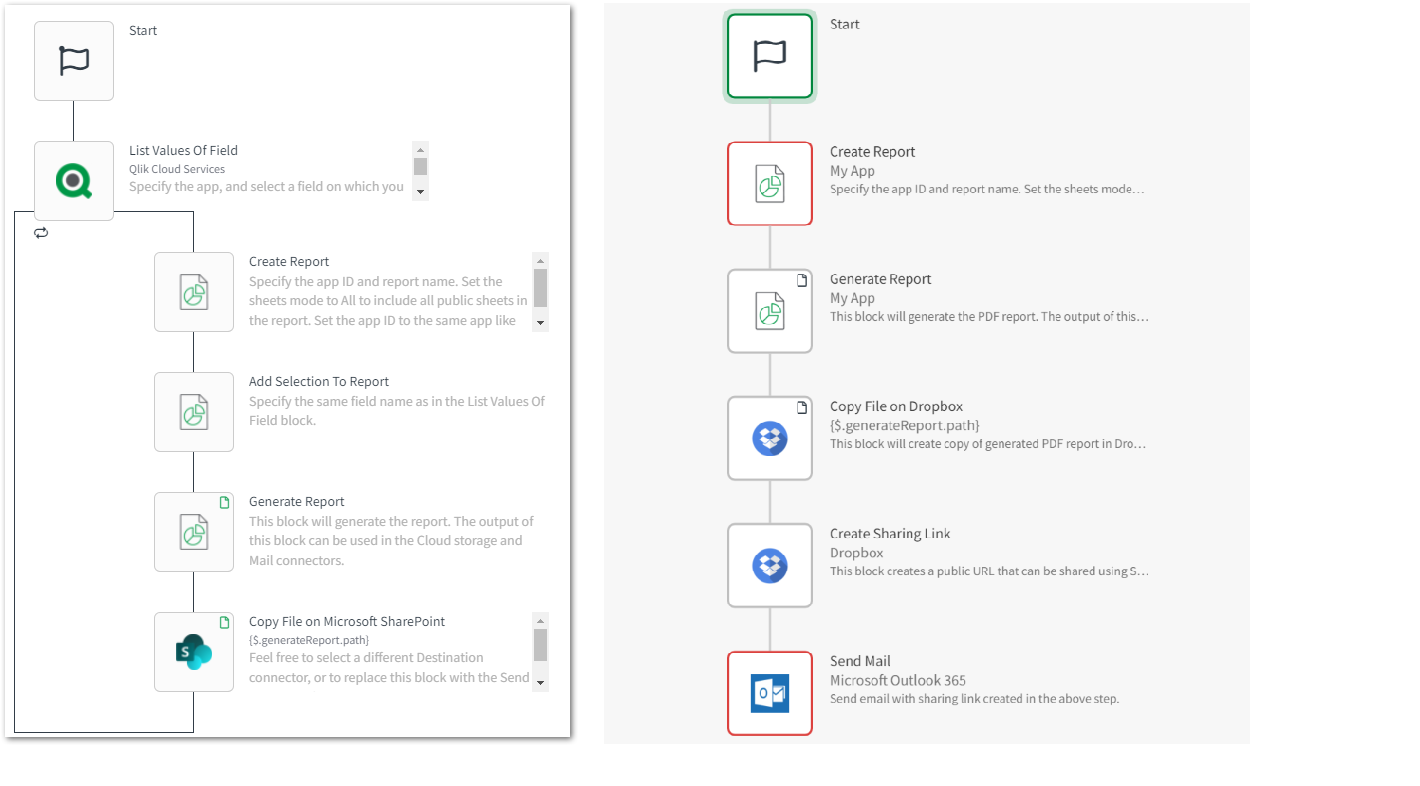Unleashing Efficiency and Insights with Application Automation in Qlik
Unleashing Efficiency and Insights with Application Automation in Qlik
In today's data-driven world, businesses are constantly seeking ways to streamline their processes and make better decisions based on data insights. This is where the power of Qlik Application Automation comes into play: it enables you to set up workflows that trigger alerts and actions in response to changes in your data. Qlik Application Automation can play a big role in helping you achieve Active Intelligence, empowering you to make data-driven decisions in real-time.
Understanding Application Automation
At its core, Qlik Application Automation refers to the process of automating repetitive tasks and workflows to support initiatives like Active Intelligence and analytics DevOps. It allows you to automate, streamline and simplify actions without coding, such as: trigger data-driven actions, integrate SaaS applications, and automate Qlik analytics and administration.
 Some practical use cases include:
Some practical use cases include:
Dynamic Action Triggers: Qlik Application Automation allows you to set up triggers that initiate actions within the Qlik analytics application. This means that when certain conditions or events occur, the system can automatically generate alerts to users, enabling them to take action in real-time. These actions can be various tasks or processes that need to be performed, streamlining workflows and improving efficiency.
Business Process Integration: Qlik Application Automation goes beyond the Qlik analytics platform to automate tasks in the broader business environment. This includes creating workflows for repetitive tasks, which can significantly increase productivity by reducing the need for manual intervention. By automating back-office tasks, employees can focus on more creative and value-added activities.
Analytics Operations: Flow automation in Qlik Application Automation offers several benefits. It enables the creation and triggering of notifications to collaboration applications like Slack and Teams. This is done using configurable business logic that is connected to Qlik Sense apps, ensuring that notifications are sent promptly and accurately. This can eliminate manual effort and errors associated with notifications, improving agility and productivity. Additionally, it enables Qlik Sense task-chaining for a more efficient analytics process. Moreover, the ability to send chart and sheet images to distribution lists and collaboration apps simplifies the sharing of insights.

Administration Automation: Qlik Application Automation can automate various administrative tasks related to tenant management. It allows for the provision of user access to different spaces within the application. Additionally, it streamlines the backup process for Qlik Sense application artifacts, making it easier to reuse them across multiple applications. The tool also facilitates the promotion of Qlik Sense applications through different stages (design, test, acceptance, production) using event-driven execution. Furthermore, it can evaluate applications post-reload and create notifications based on the reported results, which is valuable for monitoring and quality control.
Key Benefits of Application Automation in Qlik
By automating these processes, businesses can save time and reduce the risk of errors caused by manual intervention. It also empowers users to focus on deriving insights from data rather than getting bogged down by mundane tasks.
Time and Resource Savings: Automating repetitive tasks means reduced manual effort and faster execution. This allows employees to allocate their time and skills to more strategic and value-driven tasks.
Data Accuracy and Consistency: Human errors are inevitable, but with Application Automation, the risk of errors in data processing and reporting is significantly minimized. This ensures consistent and reliable results.
Enhanced Decision-Making: When data processing and analysis are automated, insights are generated faster and with greater accuracy. This enables better and more informed decision-making across the organization.
Scalability: As businesses grow, the volume of data and the complexity of processes also increase. Application Automation in Qlik allows organizations to scale their operations without compromising on accuracy and efficiency.
Reduced Bottlenecks: Automating workflows reduces dependency on specific individuals for manual tasks. This prevents bottlenecks that can occur due to individual workloads or absences.
Conclusion
Incorporating Qlik Application Automation can revolutionize the way your organization handles data. By minimizing manual effort and maximizing accuracy, businesses can unlock new levels of efficiency, enabling them to make more informed decisions and stay ahead in today's fast-paced business landscape.
If you're ready to embark on a journey towards data-driven excellence with Qlik Application Automation, consider Agilos as your trusted advisor. Together, we can harness the power of Qlik's automation capabilities to make better decisions and add real value to your data. Whether you're looking to streamline workflows, enhance reporting capabilities, or accelerate the adoption of new use cases, Agilos can guide you every step of the way. It's time to explore the world of Qlik Application Automation!
Do you want a deep dive into this exciting feature?
Feel free to contact us and we'll be happy to discuss over a coffee!